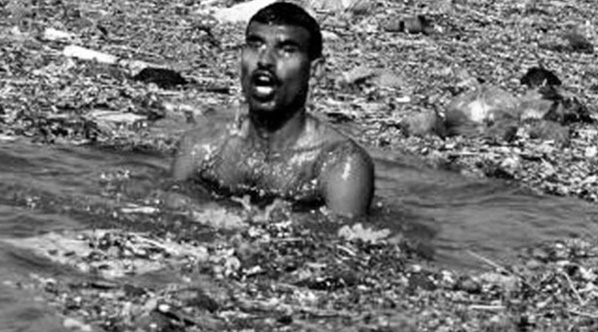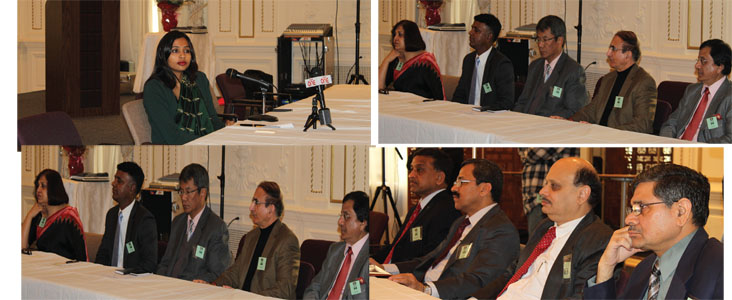
Prime Minister Narendra Modi has made clear his commitment to clear up the Ganga River. This is a most welcome step since Ganga is Holy to People world over. Ashes of many American Indians are taken to Hardwar to be immersed in the Holy River at Hardwar. PIOs world over have offered help to the Government of India in cleaning up the river.
The Ganga suffers from two problems-pollution and obstructions to free flow. Pollution, in turn, comes from two sources-municipalities and industries.
Large amounts of monies have been spent in building Sewage Treatment Plants (STP) in cities along the Ganga. However, the Municipalities have no incentive to run these plants. They would rather spend their limited resources in providing pressing civic services like street lighting and road repairs. The Municipalities, however, are mighty happy to construct more STPs since that provides opportunities for leakages and corruption.
The problem cannot be solved by yet more funding on non-working STPs. The way out is to make sewage treatment a profitable activity. Municipalities in Mumbai and Nagpur are selling sewage to industrial units who find it cheaper to use treated sewage water instead if buying fresh water. This model has to be applied across the board. The Government must invite private entrepreneurs to set up the STPs and make arrangements to buy the treated sewage water which can then be supplied for irrigation. This will make it profitable for businesses to treat sewage. This treatment will no longer be a “liability” for the Municipalities. This change of gears will require building a new system of canals to reach treated water to the farmer’s field. The supply of this water to farmers would also reduce their need for drawing fresh water from the Ganga and lead to increase in flows in the Holy River. The Modi Government has opened the purse strings and is providing large amounts of monies for STPs. Though good intentioned, it is still pursuing the “build STP” model that is destined to fail.
The other source of pollution is from the industries located in the Ganga Basin. The consortium of seven Indian Institutes of Technologies is making a Ganga River Basin Management Plan under directions of the Government. They have suggested that all industries be required to adopt “Zero Liquid Discharge.” Industries should be required to treat and reuse the effluent continuously so that nothing is discharged. Industries are willing to adopt this. Their problem is that the additional cost would price them out of the market vis-à-vis industries located outside the Ganga Basin that are allowed to discharge effluent. The problem cannot be solved by imposing punitive measures on industries in the Ganga Basin. Per force, industries in the Ganga Basin will have to close down. The way out is to make a national legislation requiring Zero Liquid Discharge by all industries irrespective of their location. Let us not forget that the Krishna, Cauvery and Mahanadi also need to be conserved. It is to the credit of Modi Government that Water Resources Minister Uma Bharati has put the industries on notice to control effluent discharges. This is a step forward. But it is still following the punitive model instead of solving the underlying economic problem.
The second dimension of conservation of Ganga is to ensure free flow in the river. Flow of the Ganga is presently obstructed by hydropower projects like Tehri, Vishnu Prayag and Srinagar; irrigation barrages at Hardwar, Bijnor, Narora and Kanpur; and the Farakka Barrage made in West Bengal to divert water to the Hooghly to enable ships to reach the Kolkata Port. Hindu scriptures clearly state that only flowing water is Holy. These projects obstruct the flow and damage the spiritual energy that the Ganga brings from the Holy Shrines of Gangotri, Kedarnath and Badrinath. Japanese researcher Masaru Emoto has taken photographs of water crystals made from different waters and found that crystals made from flowing rivers are of beautiful shape while those made from stagnant waters are not so.
Abstraction of water for hydropower, irrigation or navigation requires building a barrage that obstructs free flow and damages the spiritual quality of the water. But we cannot stop abstraction either. The way forward is to abstract water by making a partial obstruction on the riverbed so that, say, one half of the water flows freely while other half is abstracted for various purposes. Unfortunately Modi Government is bent upon making yet more obstructions to the free flow of the Ganga. The Ministry of Shipping has come up with a plan to develop the Ganga as a waterway from Haldia to Allahabad so that imported coals can be carried to the thermal power plants top be made along the banks of the Ganga. This will entail building three or more barrages between Allahabad and Buxar. The Uttar Pradesh Government is increasing the size of Narora canal so that more water can be abstracted for irrigation. The Government-owned Tehri Hydro Development Corporation has only recently started construction of the Vishnugad-Pipalkoti hydropower project that will create one more obstruction to the free flow of the Ganga. It must be mentioned here though that the Government has recently stated in the Supreme Court that it wants to ensure free flow in the Ganga but the measures it proposes to take are still unclear. Challenge before the PIOs is to make proposals to the Government of India and lead the Government in the right directions.





Be the first to comment